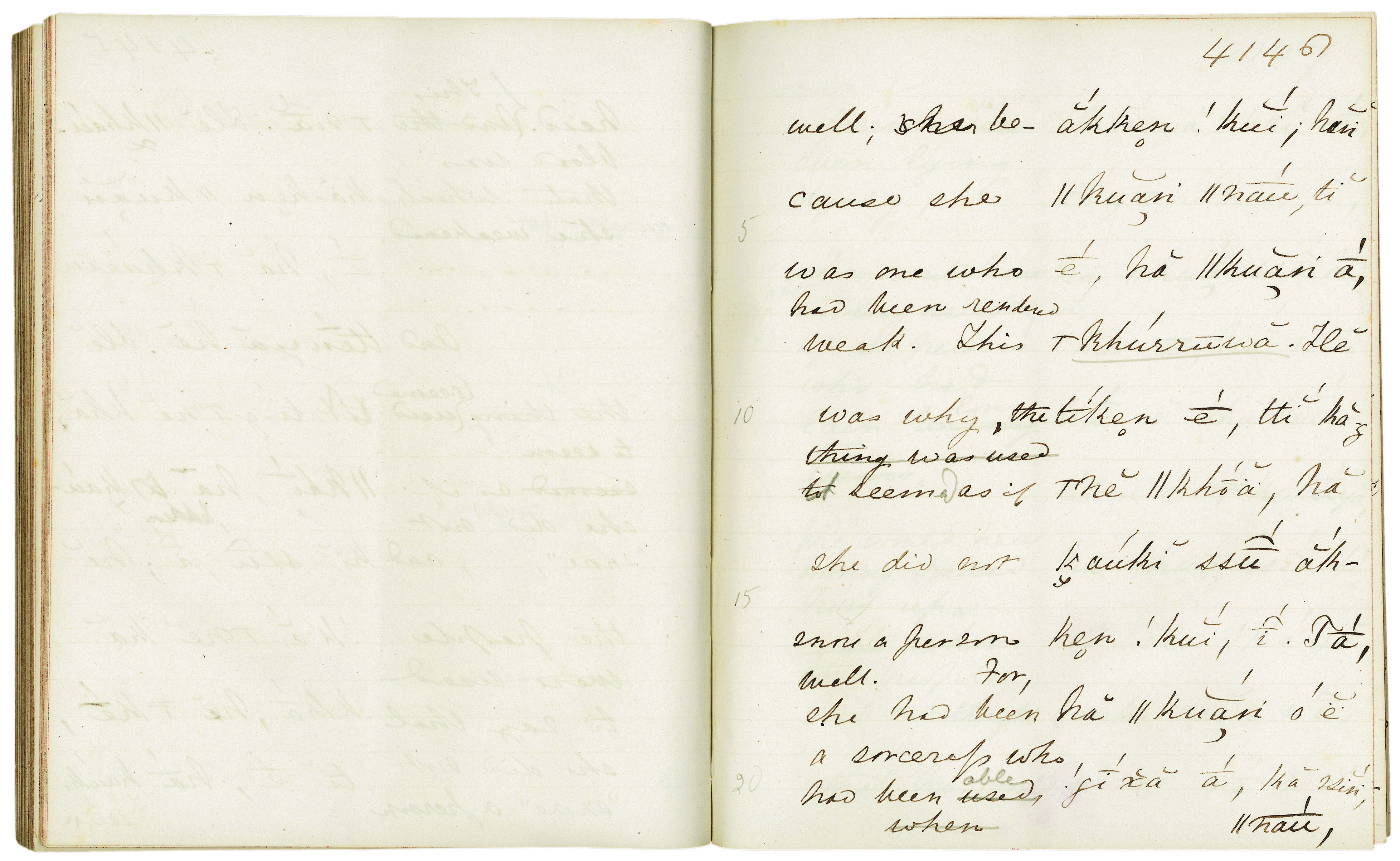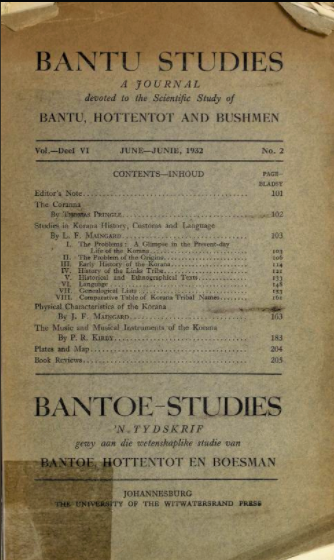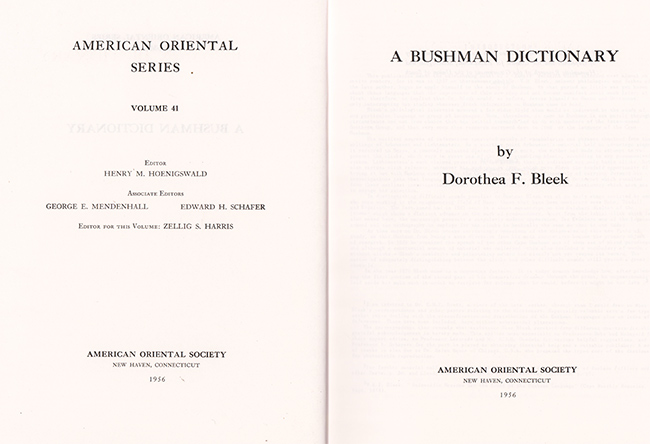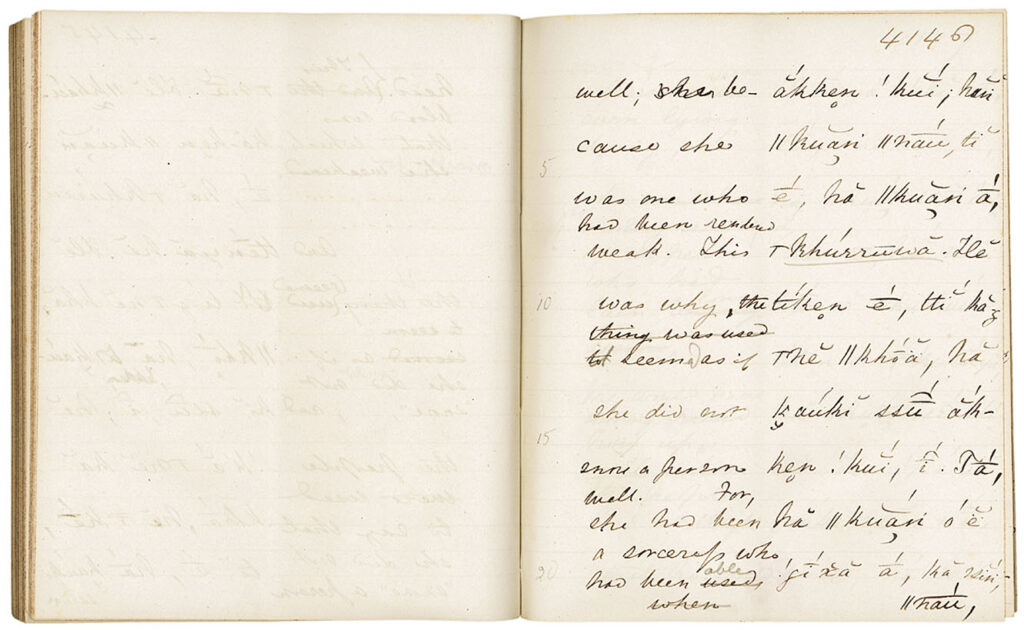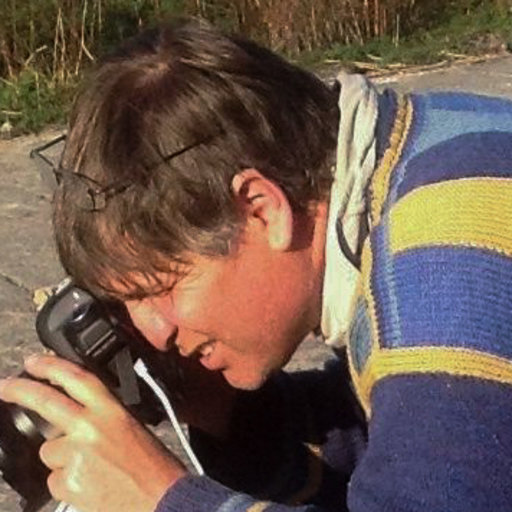‘Customs and beliefs of the ǀxɑm Bushmen’ is a large and complex collection of 115 narratives drawn from 52 notebooks in the Bleek and Lloyd Collection. For decades it was one of only two scholarly publications – the other being Bleek and Lloyd’s (1911) Specimens of Bushman Folklore – in which portions of the narratives were published in ǀxɑm alongside the English translation. These publications have played a central role in the study of rock art and in other disciplines.
In her biography Dorothea Bleek: a life of scholarship, Jill Weintroub (2015: 39) writes that ‘the texts were presented in accordance with Dorothea’s stated wish that the translations be “simply offered to the world, without comments or interpretations in whatsoever form”’. The idea that a text can ‘speak for itself’ is, of course, problematic. The act of translation is one of transformation. The texts were prepared to make them accessible, in English, to an audience of scholars and other interested readers. In preparing the narratives, Dorothea sacrificed the ǀxɑm idiom for more familiar English modes of speech, as was also the case in Specimens of Bushman folklore. And while Dorothea’s invaluable translations are always closely aligned to the ǀxɑm text, she did intervene in a number of ways, omitting ǀxɑm comments and other details that she did not consider directly relevant to the narrative. References to urination and genitalia were excised.
Following the convention established by her father and Lucy Lloyd, Dorothea Bleek continued the use of ‘Elizabethan archaisms’ (Wessels: 2010: 3), for example, thee, thou, ye, art, didst, dost, shalst, shouldst. Certain idiomatic ǀxɑm ways of saying, such as expressing ideas in the negative (‘not a little large’ rather than ‘very large’) were often overridden in favour of more idiomatic English. The meanings of ǀxɑm words as given in Dorothea Bleek’s (1956) Bushman dictionary and in examples from the notebooks suggest subtleties in meaning that were elided in the Customs and beliefs narratives.

